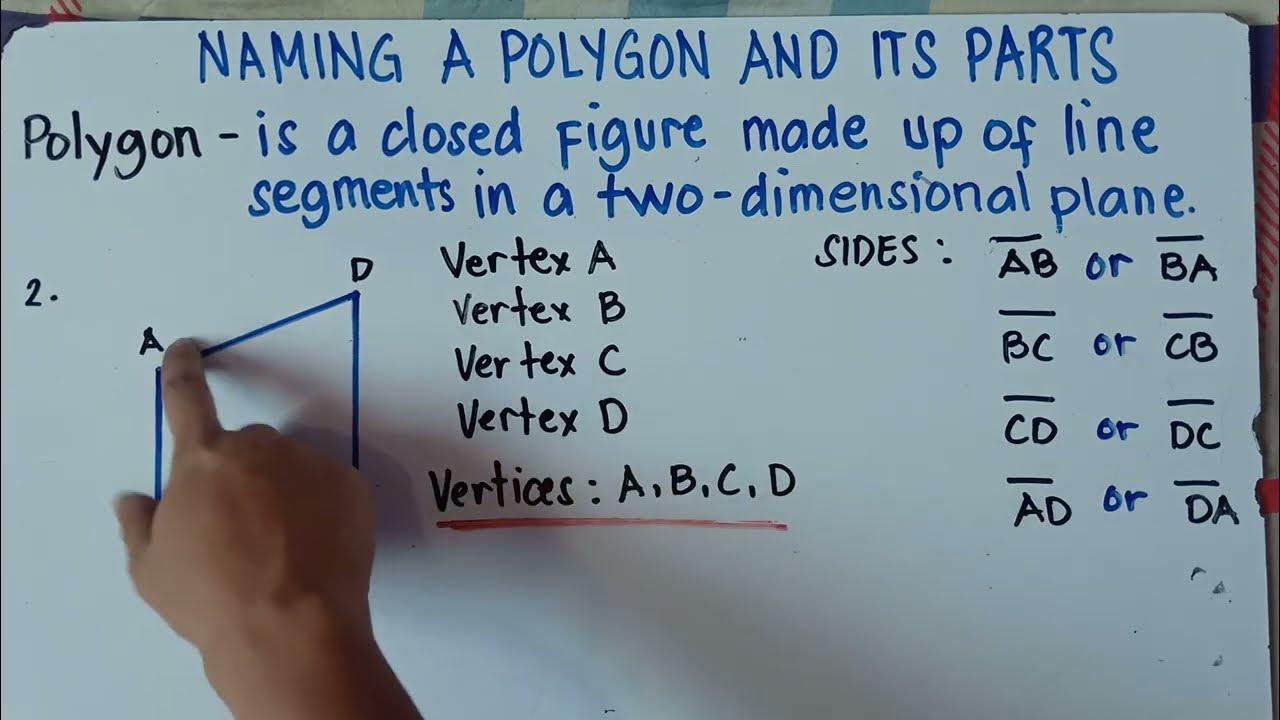CLASSIFICATION OF QUADRILATERALS || GRADE 9 MATHEMATICS Q3
Summary
TLDRThis educational video provides a comprehensive lesson on the classification of quadrilaterals. The instructor explains the defining properties of various quadrilaterals, including parallelograms, rhombuses, rectangles, squares, trapezoids, and kites. Key topics covered include identifying quadrilaterals based on side lengths, angles, and parallelism, as well as using the 360° angle sum rule for problem-solving. The video also offers practical examples and encourages engagement by guiding viewers to identify different types of quadrilaterals using provided clues and geometric properties.
Takeaways
- 😀 Quadrilaterals are four-sided polygons named based on consecutive vertices, and can be referred to by different combinations of vertex names.
- 😀 The classification of quadrilaterals includes shapes such as parallelograms, rhombuses, rectangles, squares, trapezoids, and kites.
- 😀 A parallelogram has two pairs of parallel sides, making opposite sides congruent.
- 😀 A rhombus is a quadrilateral with two pairs of congruent sides, and all sides are of equal length.
- 😀 A rectangle is a quadrilateral with four right angles (90 degrees).
- 😀 A square is a special type of rectangle where all sides and angles are congruent.
- 😀 A trapezoid has exactly one pair of parallel sides, and it can be an isosceles trapezoid if the non-parallel sides are congruent.
- 😀 A kite is a quadrilateral with two distinct pairs of consecutive sides that are congruent.
- 😀 The sum of interior angles of any quadrilateral is always 360 degrees, and this can be used to find missing angle values.
- 😀 To solve for missing angles in a quadrilateral, use the formula by subtracting the known angle sums from 360 degrees, then divide by the number of remaining unknowns.
Q & A
What is a quadrilateral?
-A quadrilateral is a four-sided polygon.
How are quadrilaterals named?
-Quadrilaterals are named using their consecutive vertices, such as ABCD, BCD, or other possible combinations of the four points.
What are opposite angles in a quadrilateral?
-Opposite angles in a quadrilateral are the angles formed by two pairs of non-adjacent sides, for example, angle A and angle C, or angle B and angle D.
What is a parallelogram?
-A parallelogram is a quadrilateral with two pairs of parallel sides.
What is the definition of a rhombus?
-A rhombus is a quadrilateral with two pairs of congruent sides.
What characterizes a rectangle?
-A rectangle is a quadrilateral with four right angles, each measuring 90 degrees.
What is a square?
-A square is a quadrilateral with four congruent sides and four congruent angles, all of which are 90 degrees.
What is a trapezoid?
-A trapezoid is a quadrilateral with exactly one pair of parallel sides.
What is an isosceles trapezoid?
-An isosceles trapezoid is a trapezoid where the non-parallel sides (legs) are congruent.
How do you calculate the angle sum of a quadrilateral?
-The sum of the interior angles of any quadrilateral is always 360 degrees. This can be verified by adding the measures of all four angles.
Outlines

هذا القسم متوفر فقط للمشتركين. يرجى الترقية للوصول إلى هذه الميزة.
قم بالترقية الآنMindmap

هذا القسم متوفر فقط للمشتركين. يرجى الترقية للوصول إلى هذه الميزة.
قم بالترقية الآنKeywords

هذا القسم متوفر فقط للمشتركين. يرجى الترقية للوصول إلى هذه الميزة.
قم بالترقية الآنHighlights

هذا القسم متوفر فقط للمشتركين. يرجى الترقية للوصول إلى هذه الميزة.
قم بالترقية الآنTranscripts

هذا القسم متوفر فقط للمشتركين. يرجى الترقية للوصول إلى هذه الميزة.
قم بالترقية الآنتصفح المزيد من مقاطع الفيديو ذات الصلة

POLÍGONOS | RÁPIDO e FÁCIL

Naming a Polygon and Its Parts | Matatag Curriculum | Grade 7 | Explain in Detailed |

Matematika Kelas 8 Bab 4 - Sudut Luar Segi Banyak - hal. 113 - 114 - Kurikulum Merdeka

konsep datar (titik, garis, bidang, sudut, dan segi banyak)

Understanding Quadrilaterals - Chapter Overview and Introduction | Class 8 Maths Ch 3 | CBSE 2024-25

BUMN QUESTIONS 2025 WORD CLASSIFICATION
5.0 / 5 (0 votes)
